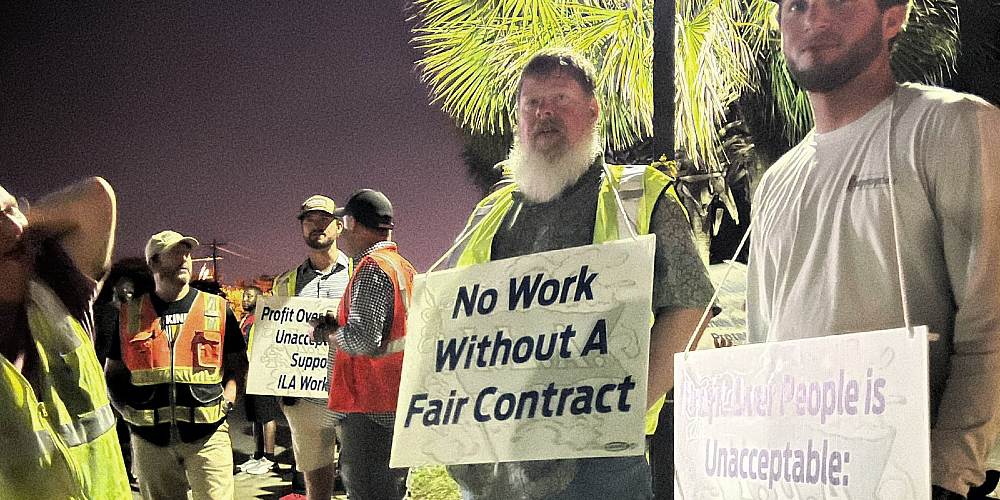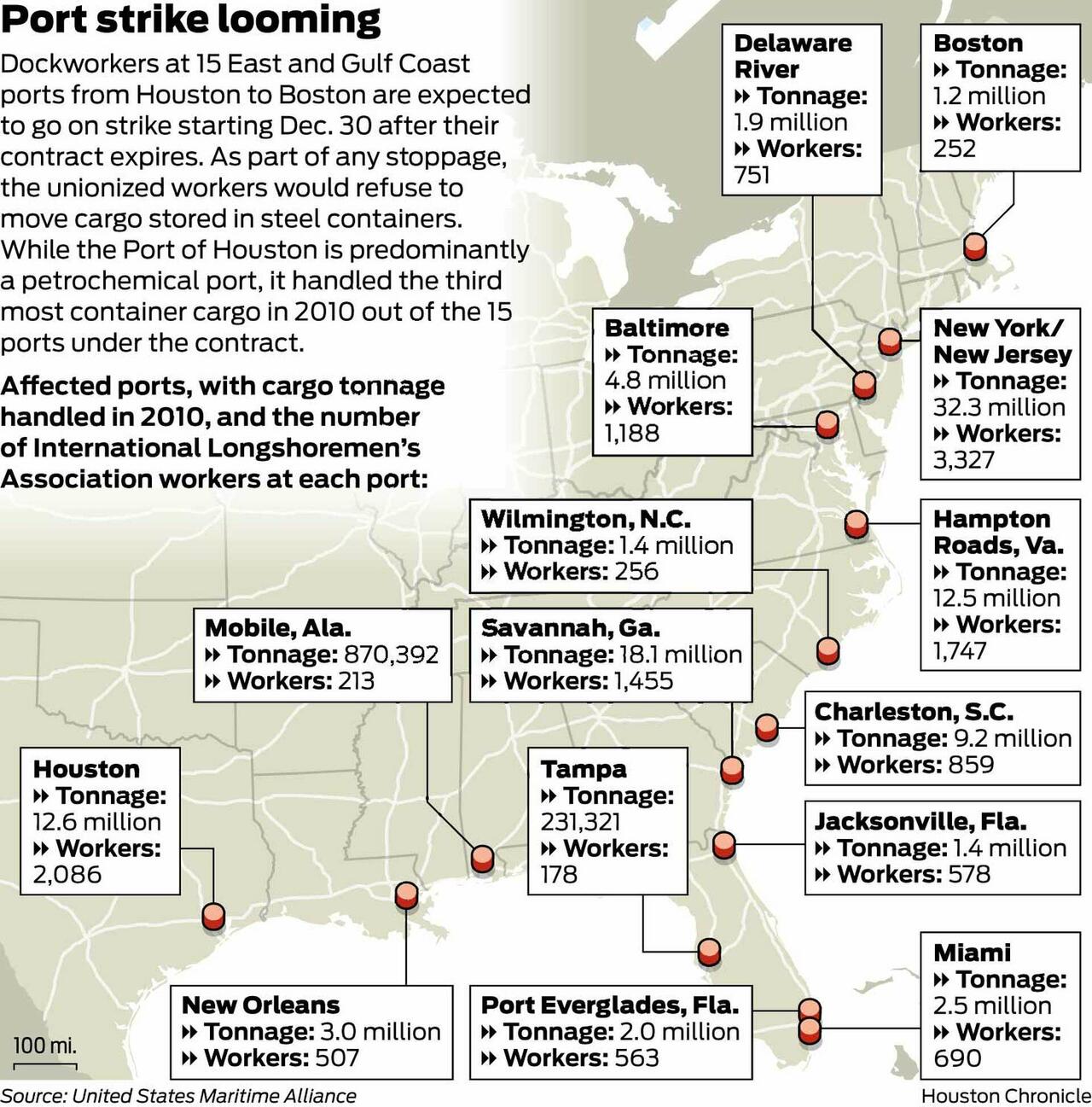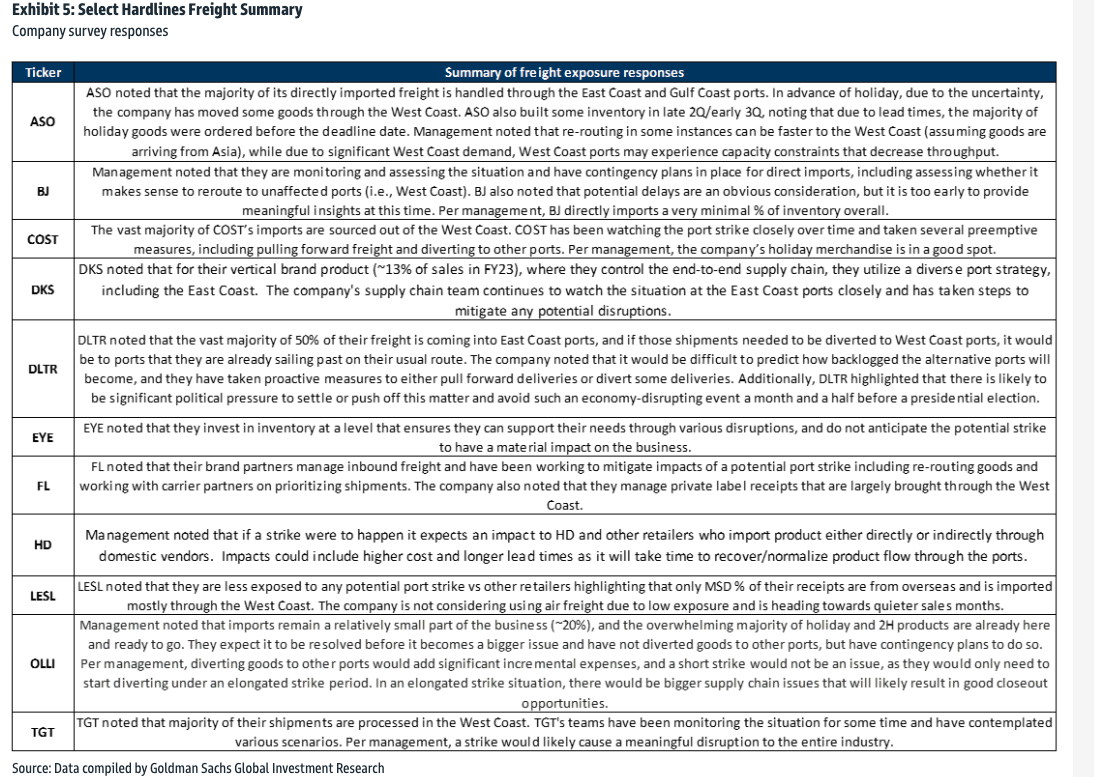(Zero Hedge)—More than 45,000 International Longshoremen’s Association (ILA) members from over three dozen facilities across 14 Gulf and East Coast ports went on strike early Tuesday, marking the largest labor action at US ports in nearly 50 years. The labor action, driven by disputes over automation and wages in a new multi-year labor contract, threatens to disrupt supply chains nationwide. If the strike persists for more than a week, retailers could face shortages of certain goods (read: here), potentially sparking another wave of inflation.
ILA’s strike hit 36 ports across the Gulf and up and down the East Coast—this is the union’s first labor action since 1977. Workers walked off the job at the Port of Philadelphia a few short minutes after midnight when ILA and the US Maritime Alliance (USMX)—a coalition of port operators and carriers—failed to agree on a new labor contract offer that would have boosted wages by 50% over six years and pledged to place limitations on port automation. The union has demanded a 77% pay bump.
The ILA refusing automation isn’t even the craziest demand.
The craziest ILA demand is *touch* fees
Let me explain…
You’ve heard about our crumbling highways and bridges? And the $1.2 TRILLION infrastructure bill Congress passed to fix them? Well, the primary culprit for that… https://t.co/P9n95vhlsS
— John Ʌ Konrad V (@johnkonrad) October 1, 2024
On Tuesday, ILA said USMX’s latest offer was rejected because it “fell far short of what ILA rank-and-file members are demanding in wages and protections against automation.” Both sides have been locked in talks since June.
“We are prepared to fight as long as necessary, to stay out on strike for whatever period of time it takes, to get the wages and protections against automation our ILA members deserve,” union boss Harold Daggett said in a statement, quoted by AP News, adding, “They must now meet our demands for this strike to end.”
BREAKING: U.S. DOCKWORKERS MOVE TOWARD STRIKE AFTER DEADLINE PASSES
Dockworkers on the East and Gulf Coasts are set to strike after failing to reach a deal, marking the first ILA strike since 1977.
The strike could halt about half of the nation’s ocean shipping, costing the… https://t.co/SAvY2hgrCe pic.twitter.com/HTWcbdsnYo
— Mario Nawfal (@MarioNawfal) October 1, 2024
BREAKING – Over 45k union dockworkers with ILA are officially on strike, shutting down all East and Gulf coast ports, from New York to Miami to Houston. They’re standing to protect their future against the shipping companies forcing automation on the docks. pic.twitter.com/BnRqZzkHqT
— On the Line (@laborontheline) October 1, 2024
Supply chain management company Flexport founder and CEO Ryan Petersen noted on X that the Teamsters Union released a statement in solidarity with ILA, informing the Biden administration to “stay the f**k out of this fight”…
The Teamsters tells Biden to “stay the f**k out of this fight” in their statement of solidarity with the ILA.
When did organizations start using curse words in their official press releases?
T minus 54 minutes to the port strike… pic.twitter.com/HRb3OEHMNX
— Ryan Petersen (@typesfast) October 1, 2024
Ahead of the strike, a video posted on X, supposedly of ILA boss Daggett, warned: “I will cripple you, and you have no idea what that means. Nobody does,” referring to the power the union has over the US economy.
https://twitter.com/BrotherMikeyX/status/1840770964314820647
“This video is wild If this video is real, I think we need to give the longshoreman exactly what they want immediately… … then we need to execute on a plan to automate as much of the ports as possible so they can’t destroy civilization — as he’s threatening to do!,” All-In’ podcast host Jason Calacanis wrote on X while commenting on the video.
Goldman analysts explained last week that a walkout by ILA members would jeopardize $5 billion in daily international trade coming into the Gulf and East Coast ports, while JPMorgan noted the hit could be between $3.8 billion and $4.5 billion a day.
On Monday morning, Goldman analysts led by Brooke Roach provided clients with an overview of the major retailers that would be impacted the most by a port shutdown. In particular, the analysts found that about half of Dollar Tree’s products had passed through these ports, indicating that a prolonged strike could spark shortages of certain goods on store shelves.
Also on Monday, Suzanne Clark, CEO of the US Chamber of Commerce, wrote in a letter to the Biden administration: “It would be unconscionable to allow a contract dispute to inflict such a shock to our economy,” adding, “Taft-Hartley would provide time for both parties in negotiation to reach a deal on a new labor contract.”
-
Learn the TRUTH about Gold IRAs and how most precious metals companies play dirty.






